
Through Peaks and Plateaus: My Mjølkevegen Ride Rolls On
Text and Photos by Gjermund Gustavsen – Part 2 of 2 (Part 1 here) Picking up where yesterday left off, I continue my unpredictable journey
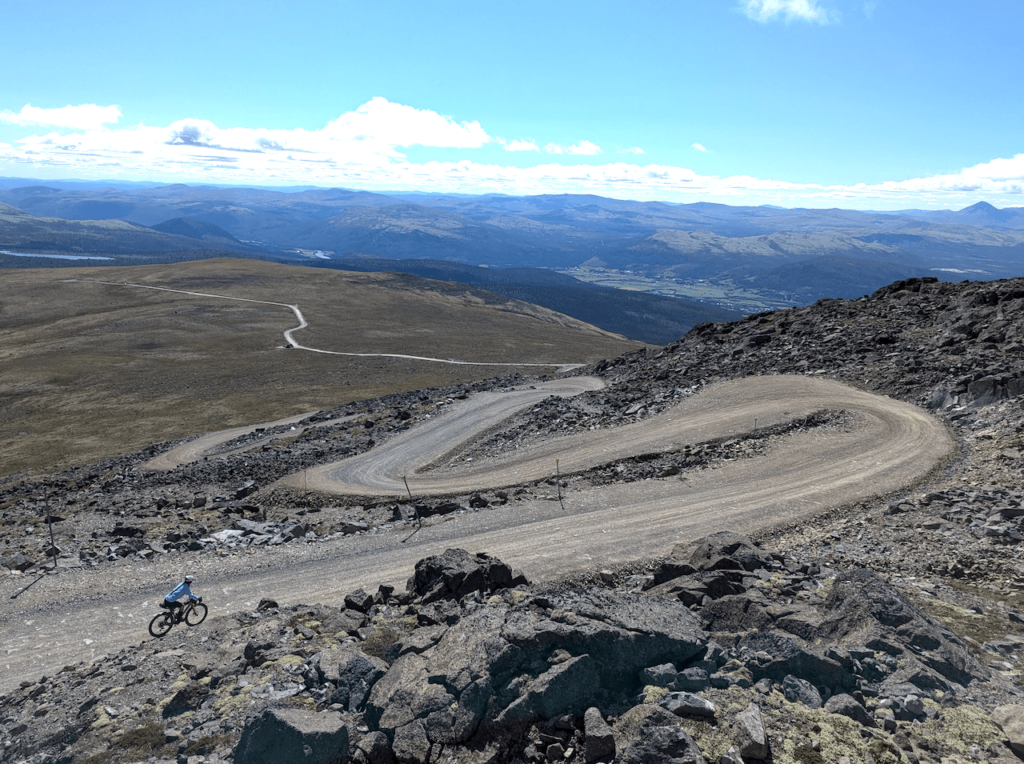
Text by Jonathan Robinson. Photos by Jonathan Robinson & Pär Lindholm.
As an avid gravel and road cyclist living in Sweden, I’ve been drawn to cycling in Norway for some time. It was only this year that I got my first opportunity to do so. I spent a week travelling around the south and west in July, developing a real love of Nordic mountain climbs on famous ascents such as Lysebotn, Jondal to Folgefönna and Rallarvegen. I couldn’t resist one more flying visit before the weather turned and the high alpine landscapes were out of reach for another season.
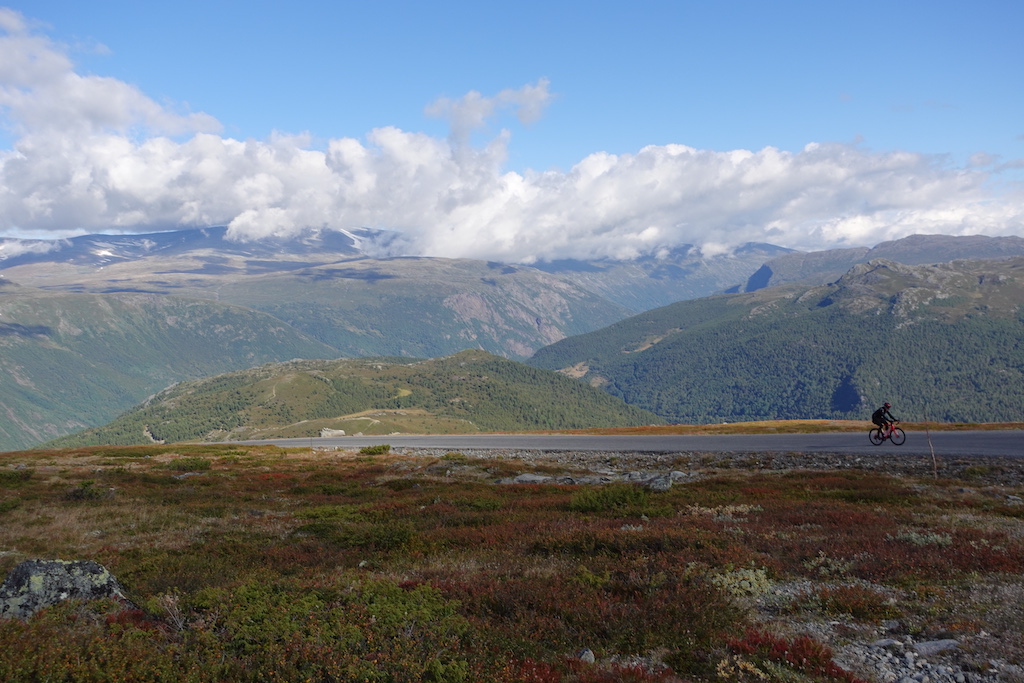
To look at me, I’m the last person you’d think would love to go uphill. Over 2m tall and the wrong side of 100kg, I’m lugging a lot more weight up the slopes than most, but it’s always been what I’ve enjoyed most about cycling. The challenge of finding the biggest and toughest climbs on a map and then setting out to conquer them.
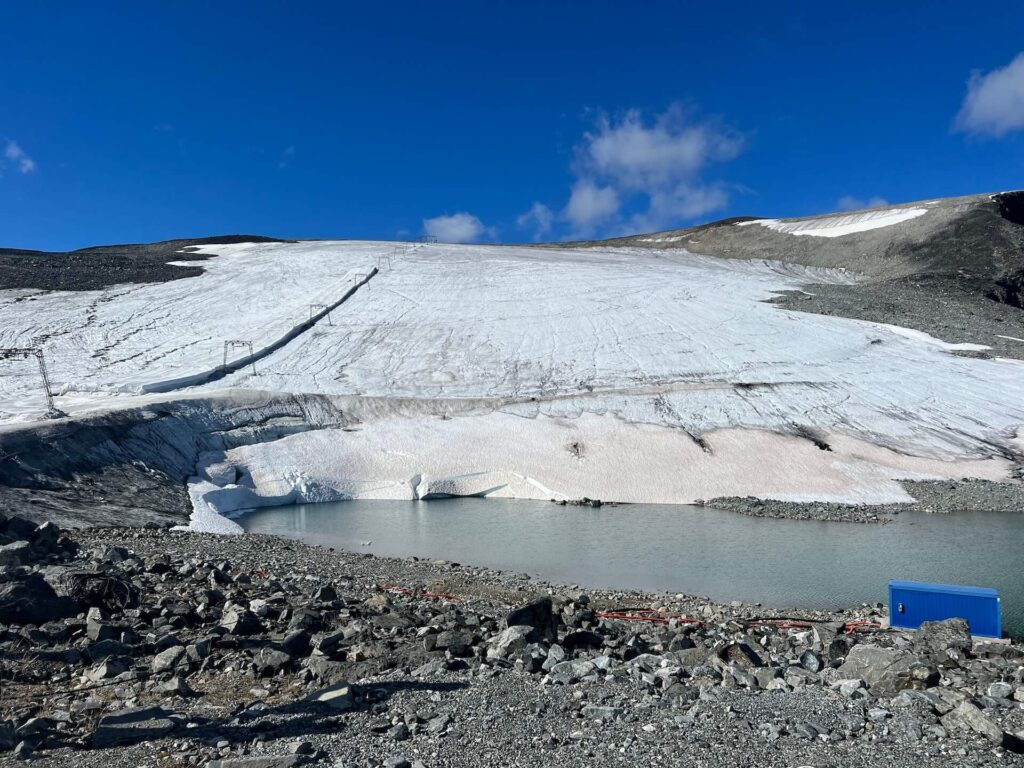
I planned a short 4-day trip up to Oppland, the region with Norway’s highest peaks. Juvasshytta, Tronfjell and Blåhø are the three highest and toughest roads in the country and I wanted to climb them all.
First was Tronfjell. I had incredible luck with the weather on the trip, travelling up during weather so severe that flood and landslide warnings were in place. As I parked up, the evening before the climb, the weather eased. The next morning, thick mist was shrouding the mountain tops, but the weather forecast promised it would clear. I set off, taking a few flat kilometers to the foot of the mountain to warm up my legs.
Tron is an unforgiving and difficult climb. Like so many of the big ascents, it goes through three stages – an initial very steep and unrelenting pitch out of the valley, a gentler section as the mountain’s saddle/ridge is reached and a final brutal summit climb.
I hit the cloud before I’d even reached the flatter middle section, and climbed in very limited visibility for much of the way. It wasn’t until I was nearing the top that I glimpsed anything approaching a view. That final section, with it’s unforgiving 17% switchbacks, is the sting in Tron’s tail. Of the three big climbs, it certainly has the hardest final kilometers.
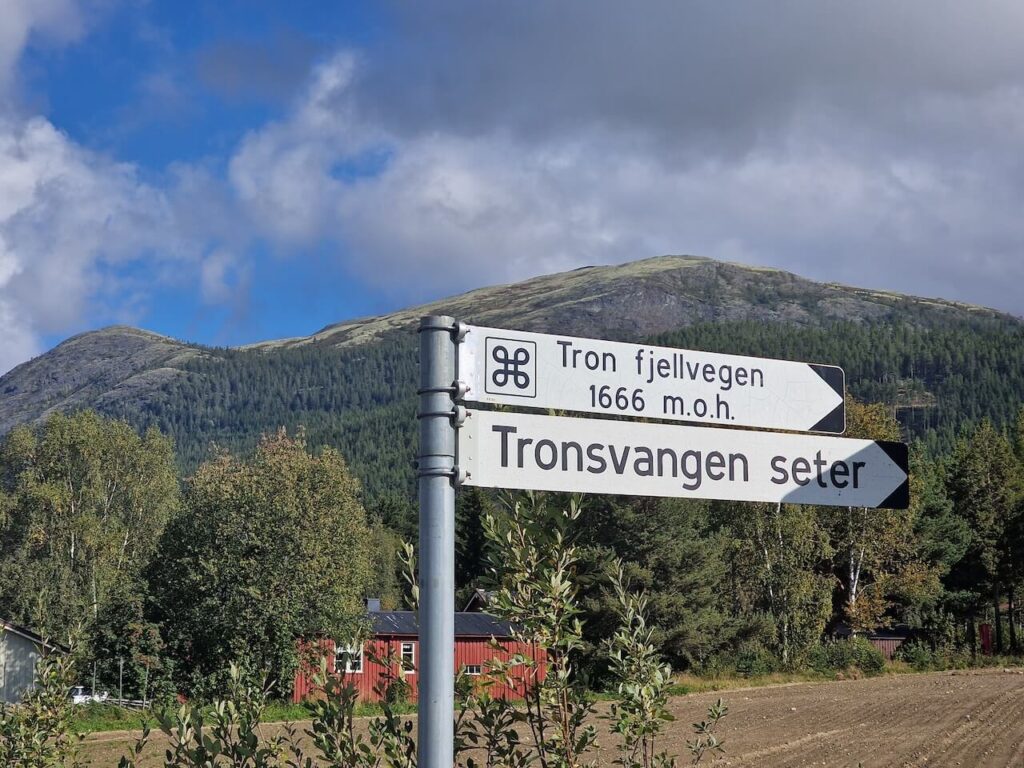
The summit (1666m) houses a broadcasting antenna, built in the 1960s. It is for that reason that the road was built. I waited a little while for the mist to clear, but it did so only for momentary glimpses and getting cold, I thought better of hanging around much longer. I had ascended the mountain just an hour or two earlier than was optimal for views, but being someone who appreciates the cold when climbing, I didn’t mind. Besides, I knew that blue skies were coming.
I added a further 40km of riding after coming off the mountain, choosing to climb up the other side of the valley to the west. By this time, the weather was perfect, and my view of Tronfjell unobstructed. A beautiful and very prominent mountain.
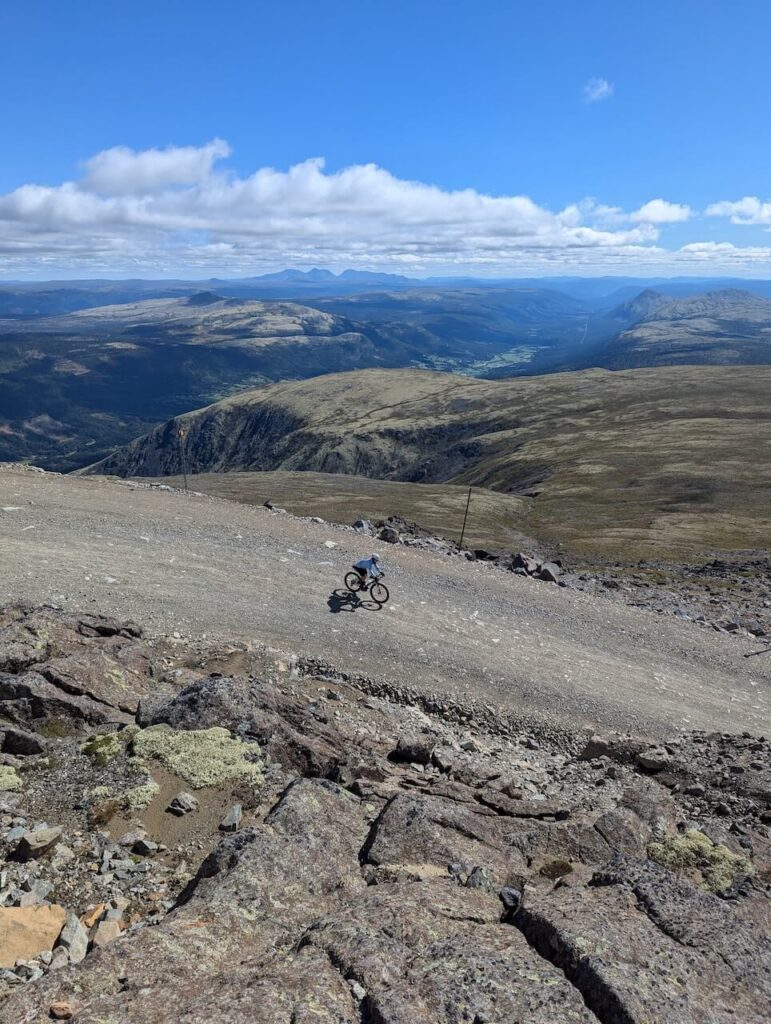
On the day between climbing Tron and Blåhø/Juvasshytta, I did a lovely 120km ride on a route called ‘The Tour de Dovre’. This gravel road/path encircles the Dovre National park, where you have a chance at seeing Muskox (an extremely rare arctic species, with only two, small populations in Scandinavia). It served as a gentle rest and recovery ride with fairly minimal climbing. Grimsdalvegen was a real highlight on this ride. Truly stunning.
Juvasshytta had always been part of my plan, but thanks to Matthew Tolley and others, I was pointed in the direction of Blåhø as a climb that could not be missed. Whilst Tron and Juvasshytta might be a touch higher, Blåhø is regarded the toughest of the three.
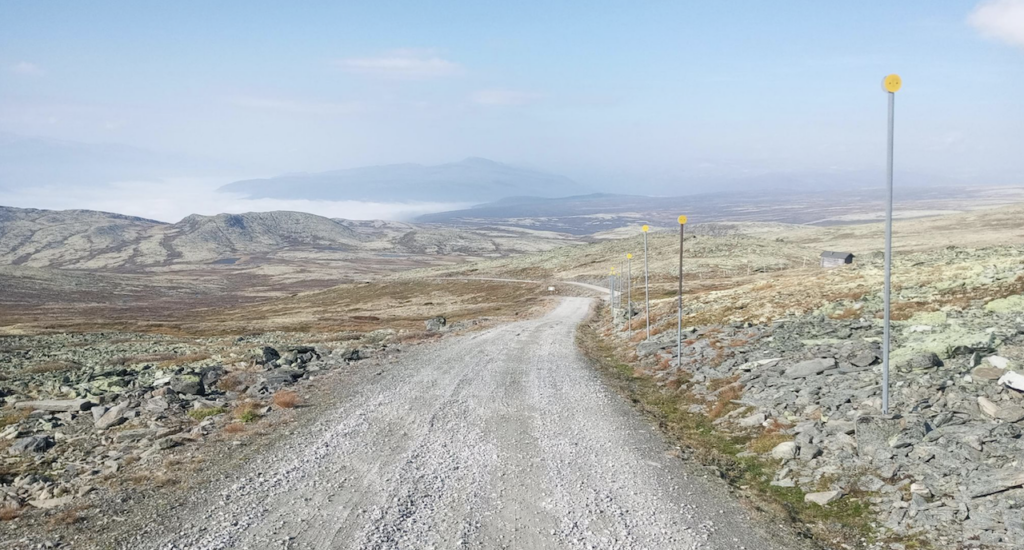
I spent the night on the other side of the valley, parked at Høvringen with a stunning view of the mountain. I’ve believe that there is value in sleeping at altitude where possible when intending to climb these mountains.
I started out from Vågåmo, where the climb wastes no time in settling into a solid 12% average incline, which continues on for over 5km. Much like Tron, the middle section was much less severe but my luck with the weather was far better. Whilst the valleys were shrouded in a quite striking cloud inversion, everything above 850m was illuminated in strong, brilliant sunshine. One of the lovely things about Blåhø is that the summit is plainly visible as soon as you complete the initial 6km climb out of the valley. The endpoint is always in view, and seeing the radio mast in the distance is quite motivating.
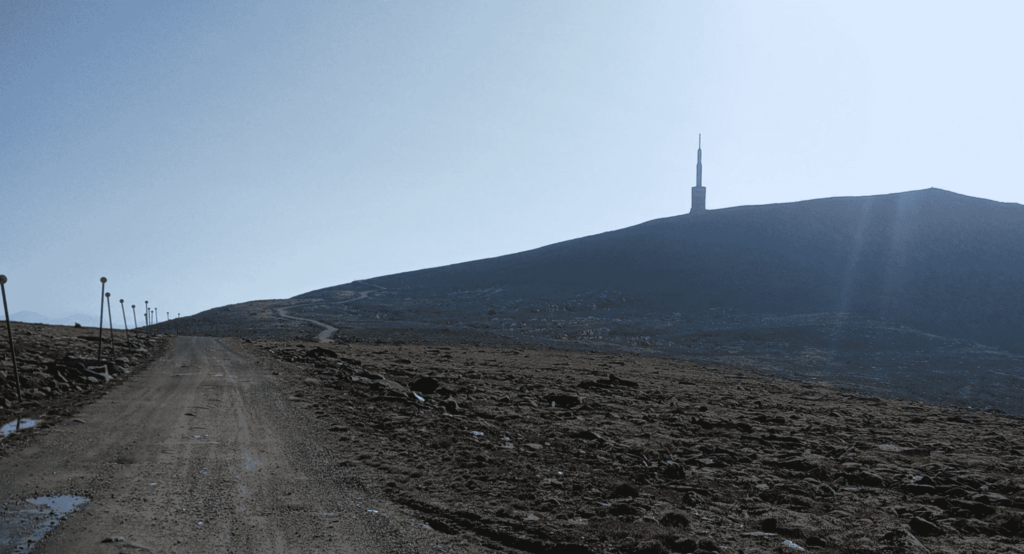
The gravel was smooth up until about 1000m asl, but got progressively lumpier, the closer I got to the summit (1617m asl). Like Tronfjell, the final segment to the summit is very steep and loose, but mercifully, not so long. I had the summit to myself, surrounded by mountains but the valleys obscured by cloud. 360-degree views under blue skies and basking in late summer sun, it was a memorable moment. I descended back down to Vågåmo, had a good rest and switched to the road wheels.
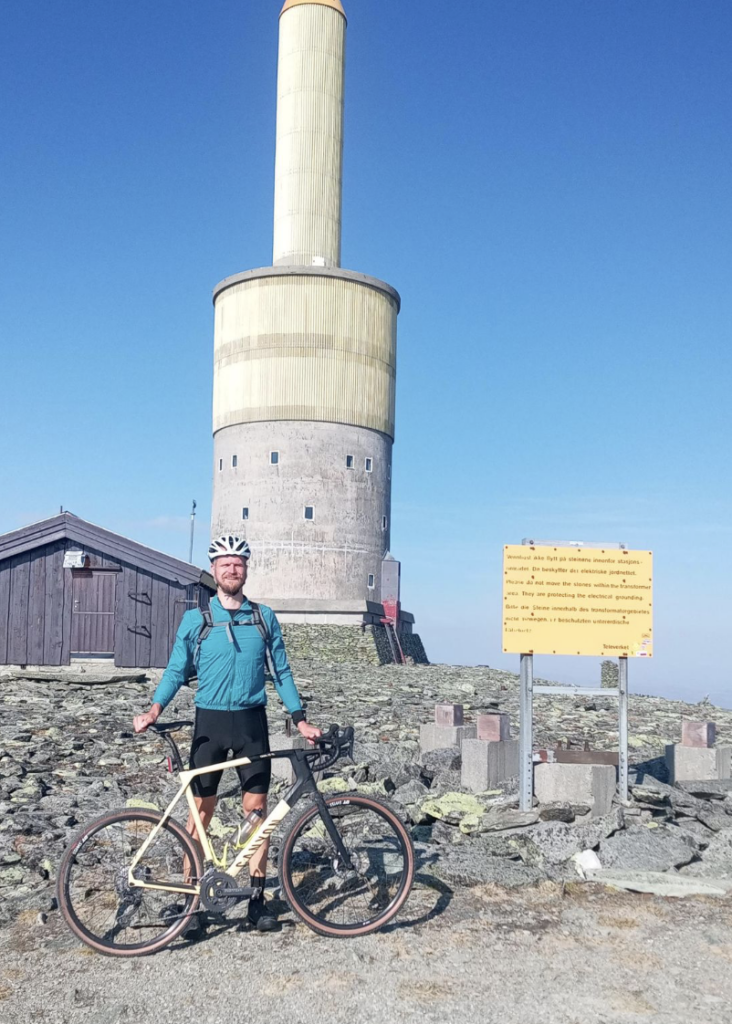
Juvasshytta: to tackle Norway’s toughest and second toughest climb in one day maybe isn’t the sanest of decisions. But time was limited, the weather was glorious and my legs (despite their best protestations) were good to go.

Being back on asphalt gave Juvasshytta a different feel to the preceding two climbs. Starting at a slightly higher altitude, you’re very quickly above the tree line and onto tundra. Being late afternoon, I had a steady (though not problematic) stream of tourists descending the mountain in their cars. Some waved me on with signs of encouragement, others with calls of ‘imponerande!’ (impressive!). It takes a special kind of loon to enjoy climbing mountains on a bike, but it’s a club I’m a happy and willing member of!
The climb up to Juvasshytta seemed unending, with merciless pitch after merciless pitch, 15% or more being common. My thoughts went to the descent afterwards, and my poor unsuspecting brake pads! In the end, the finish line and plateau came sooner than expected and the mountain lodge (1841m asl) was just ahead of me, glaciers visible all around. I stopped for a well earned coffee and croissant and took a few photos.
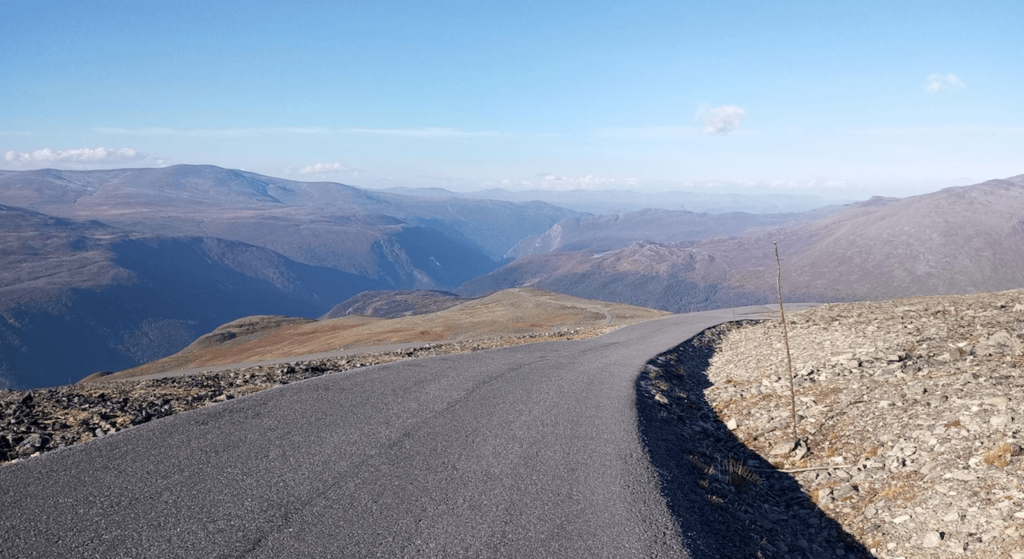
The descent felt suicidally fast at times, and my brakes were screaming by the end. You pick up speed so quickly on asphalt, especially when you weigh 101kg. My descent seemed less problematic than that of a well loaded German VW campervan, who had to take a break half way down to allow their smoking brakes to cool.
I slept very well after the climbs and I managed to squeeze in just one more ride, early the next morning. 72km, 2200m of ascent and incorporating Slettefjellvegen (yet another HC category climb).
I’d recommend the high mountains of Oppland and Norway more broadly to anyone with a love of climbing. The weather can be challenging, but the rewards are more than worth it. The mountains are just so quiet and untouched compared to those further south in Europe, and in mid summer, the temperatures allow for comfortable ascents. And if you do overheat, there is always a frigid mountain stream or lake to jump into!

For more information about Norway’s epic climbs see here.

Text and Photos by Gjermund Gustavsen – Part 2 of 2 (Part 1 here) Picking up where yesterday left off, I continue my unpredictable journey

Text and Photos by Gjermund Gustavsen – Part 1 of 2. My solo journey through the highs and lows of Norway’s iconic gravel route It

Text by Jonathan Robinson. Photos by Jonathan Robinson & Pär Lindholm. As an avid gravel and road cyclist living in Sweden, I’ve been drawn to cycling
Cycle Norway is dedicated to making Norway, safer and more enjoyable to experience by bike and to inspire and inform a growing audience of the opportunities available.